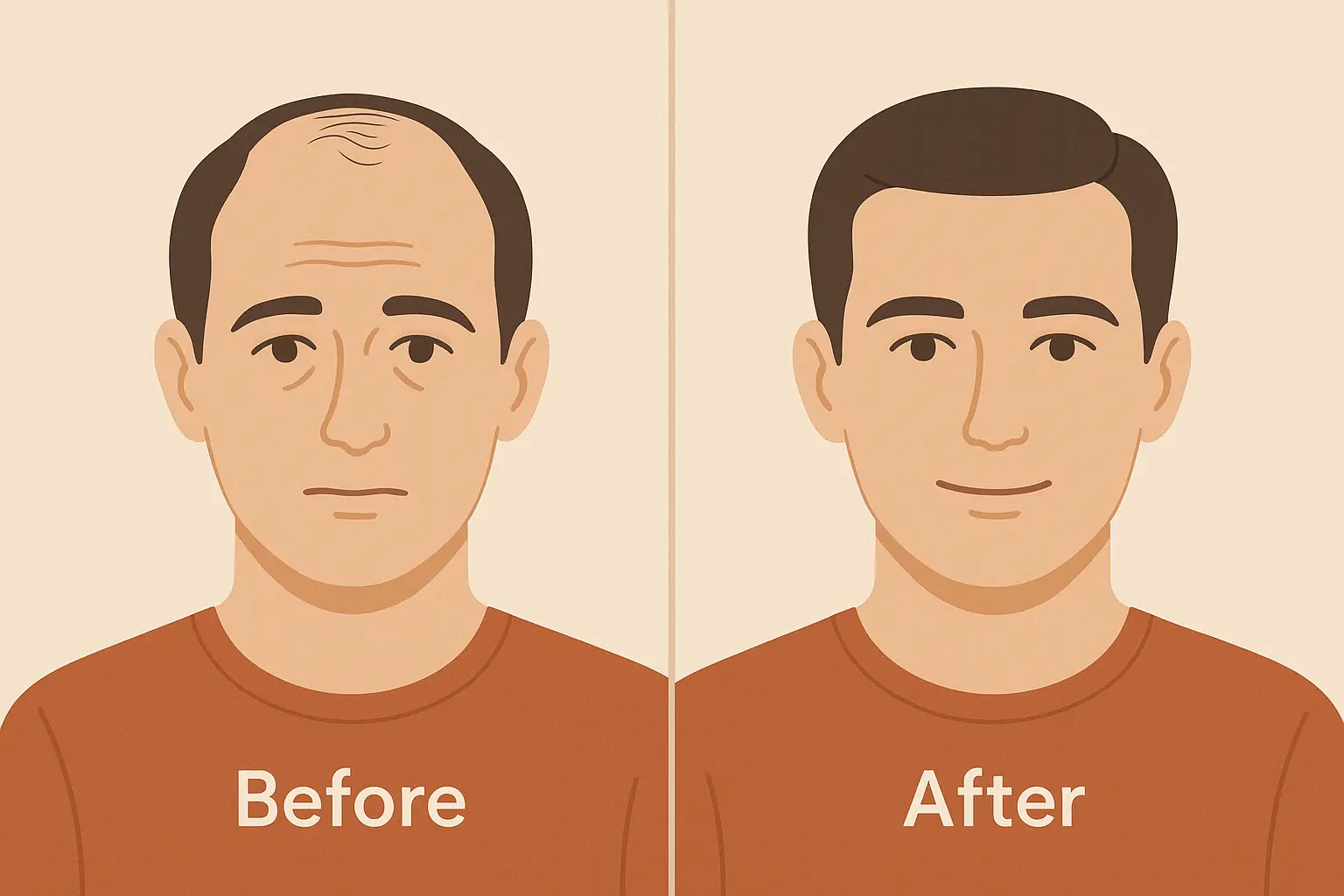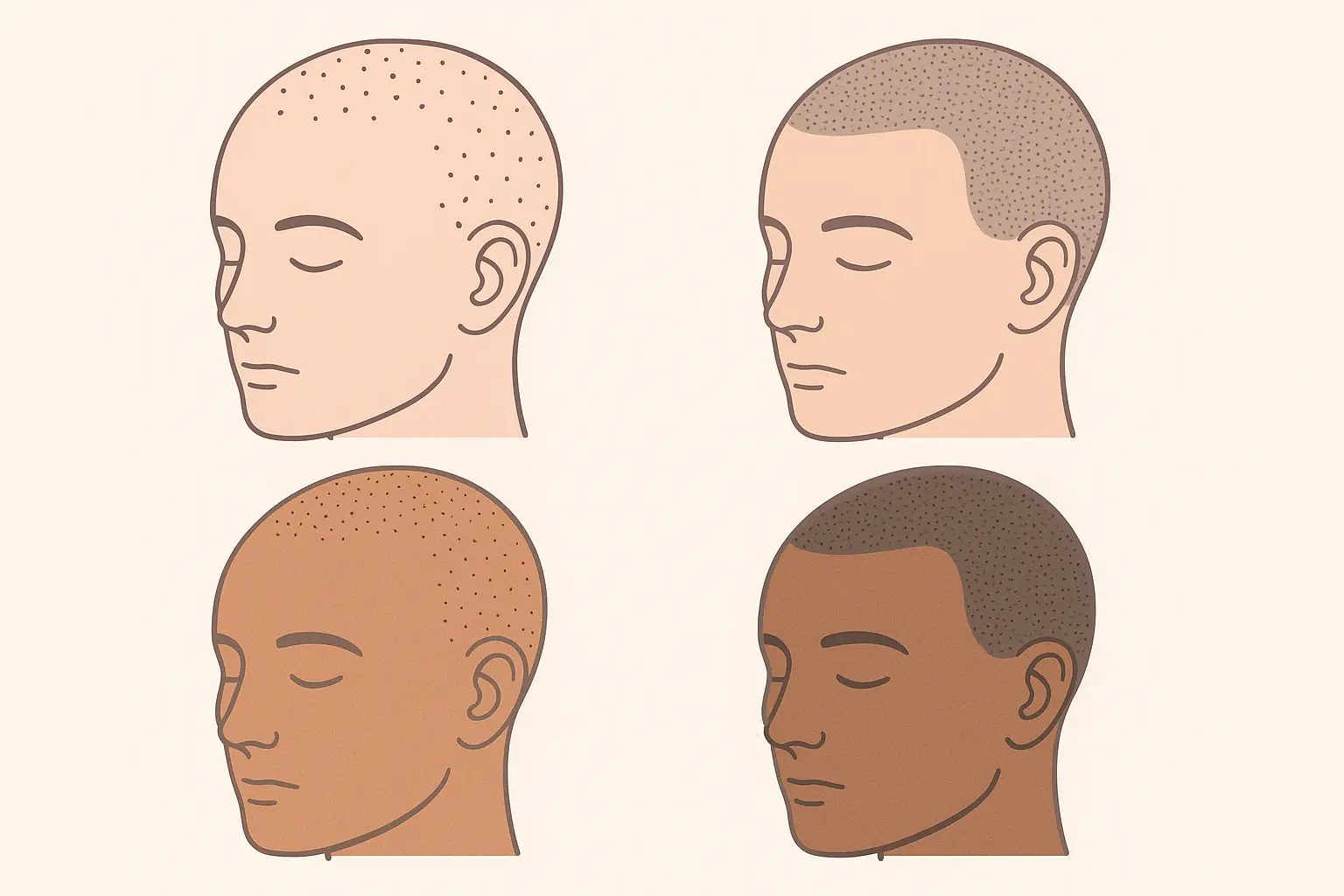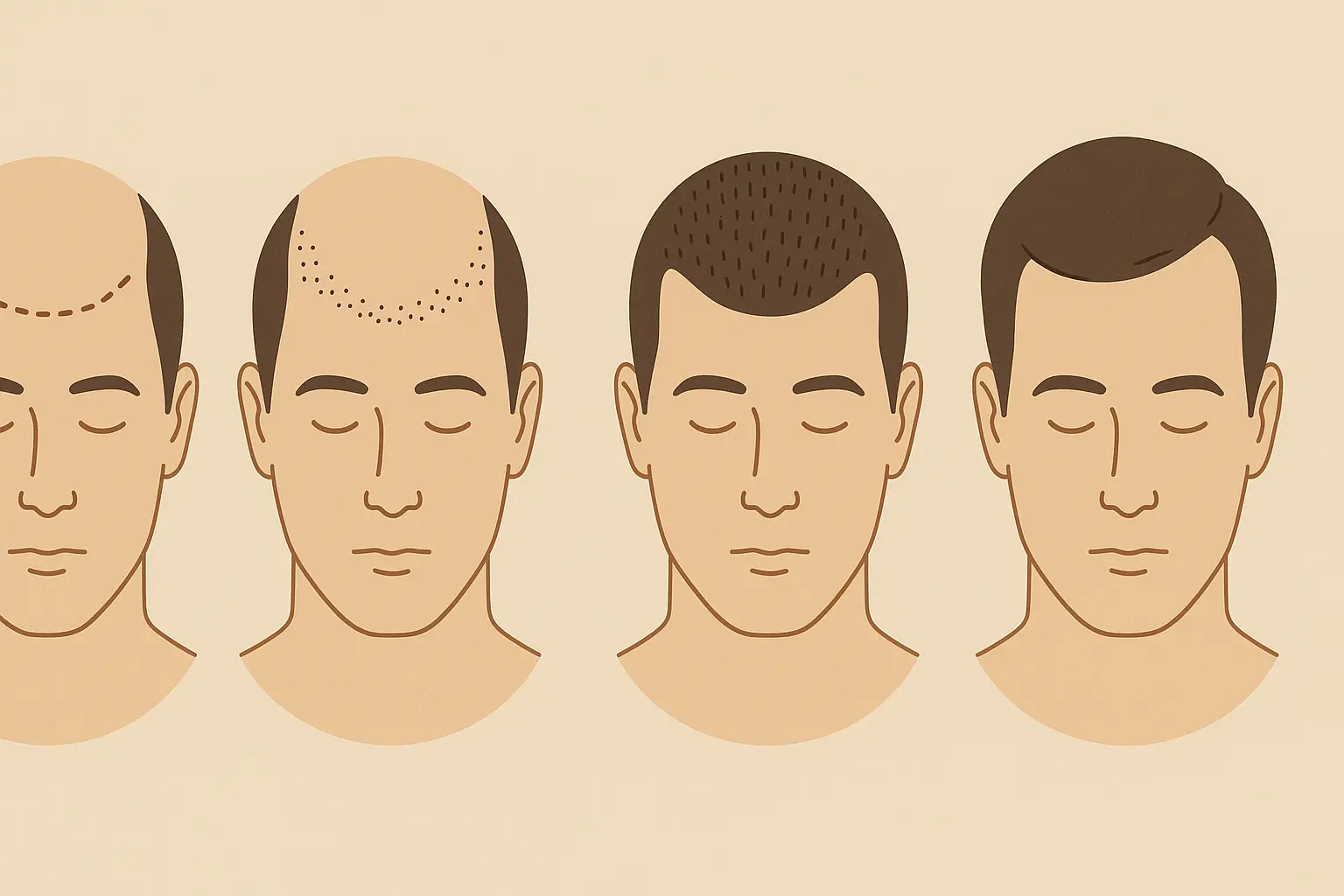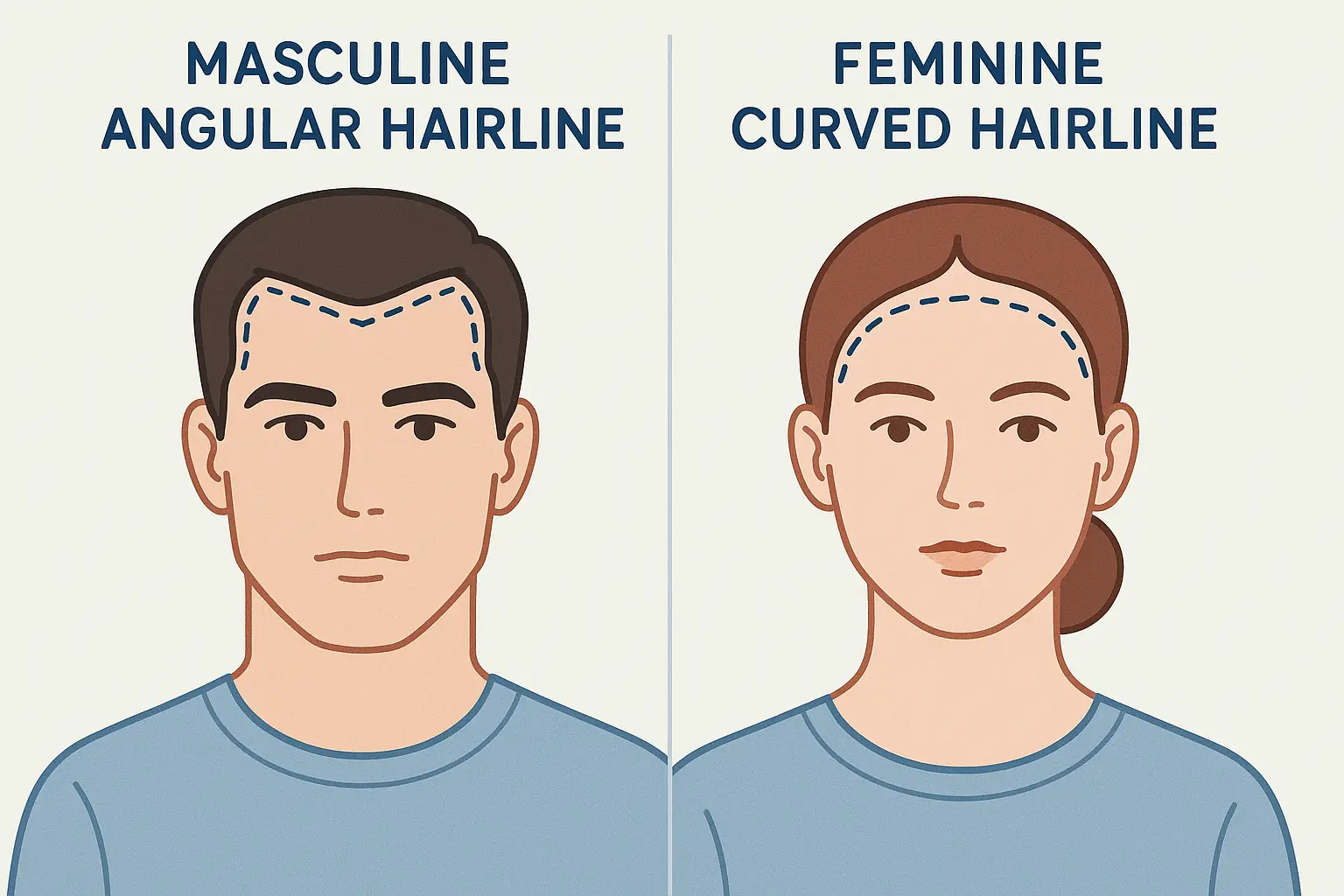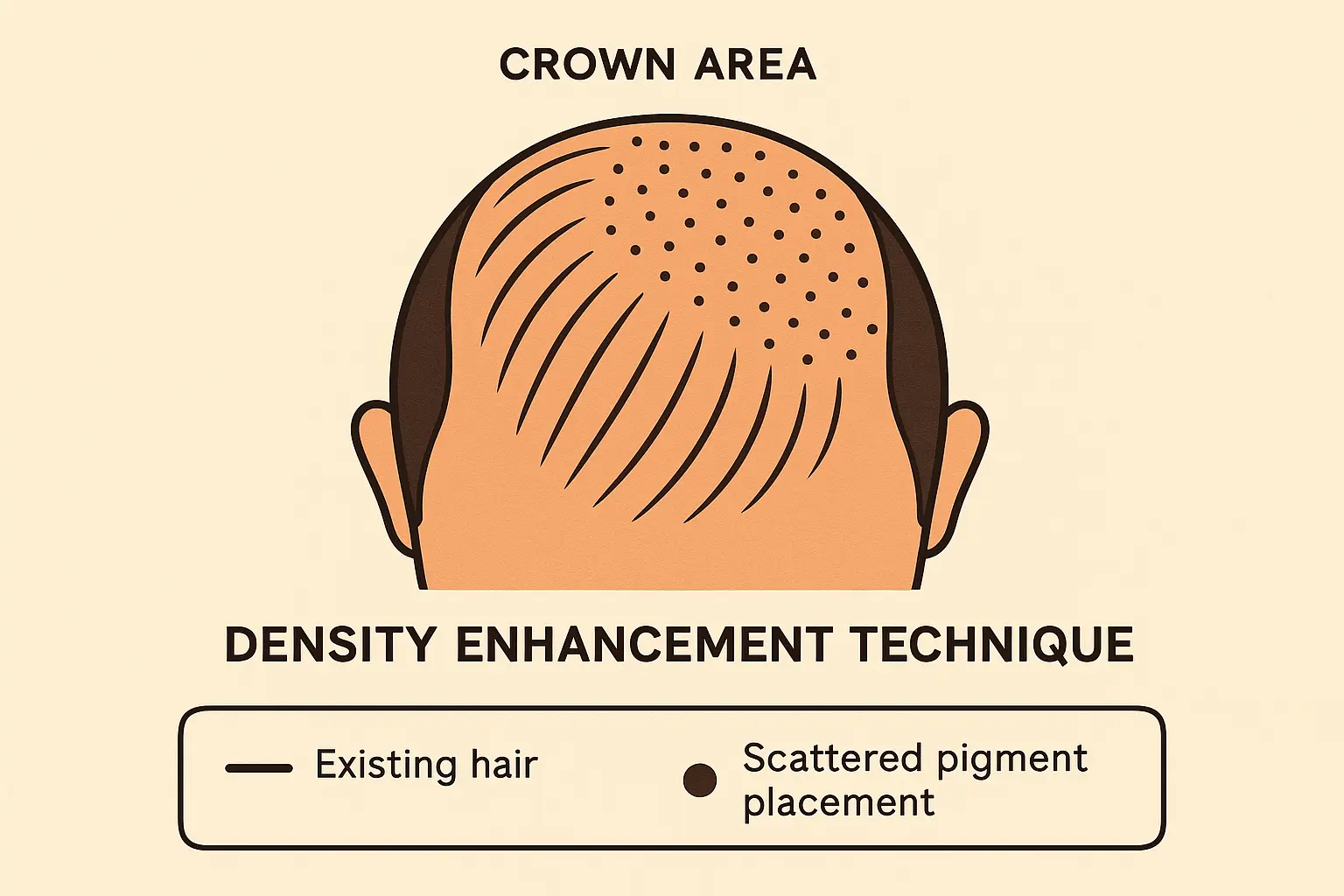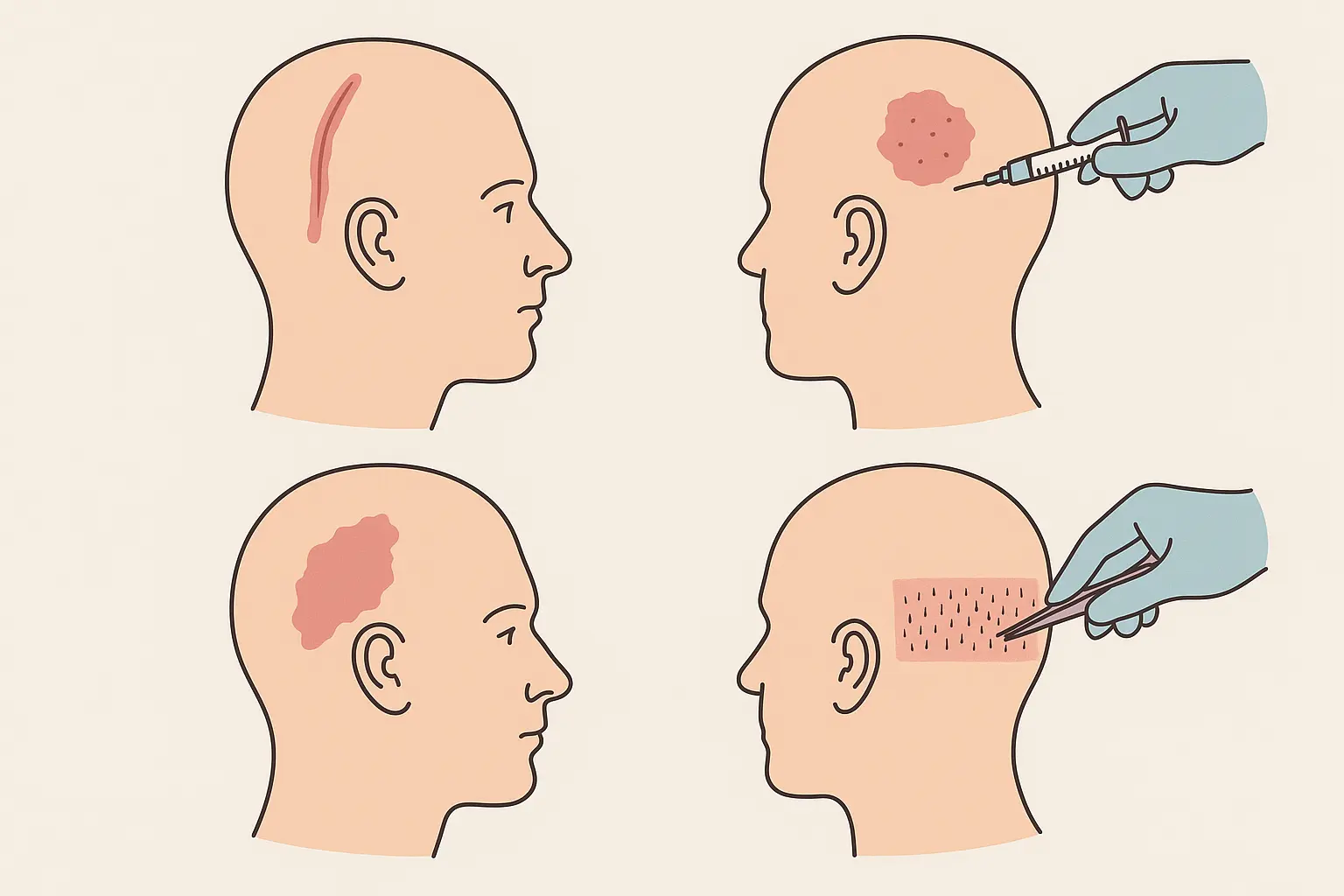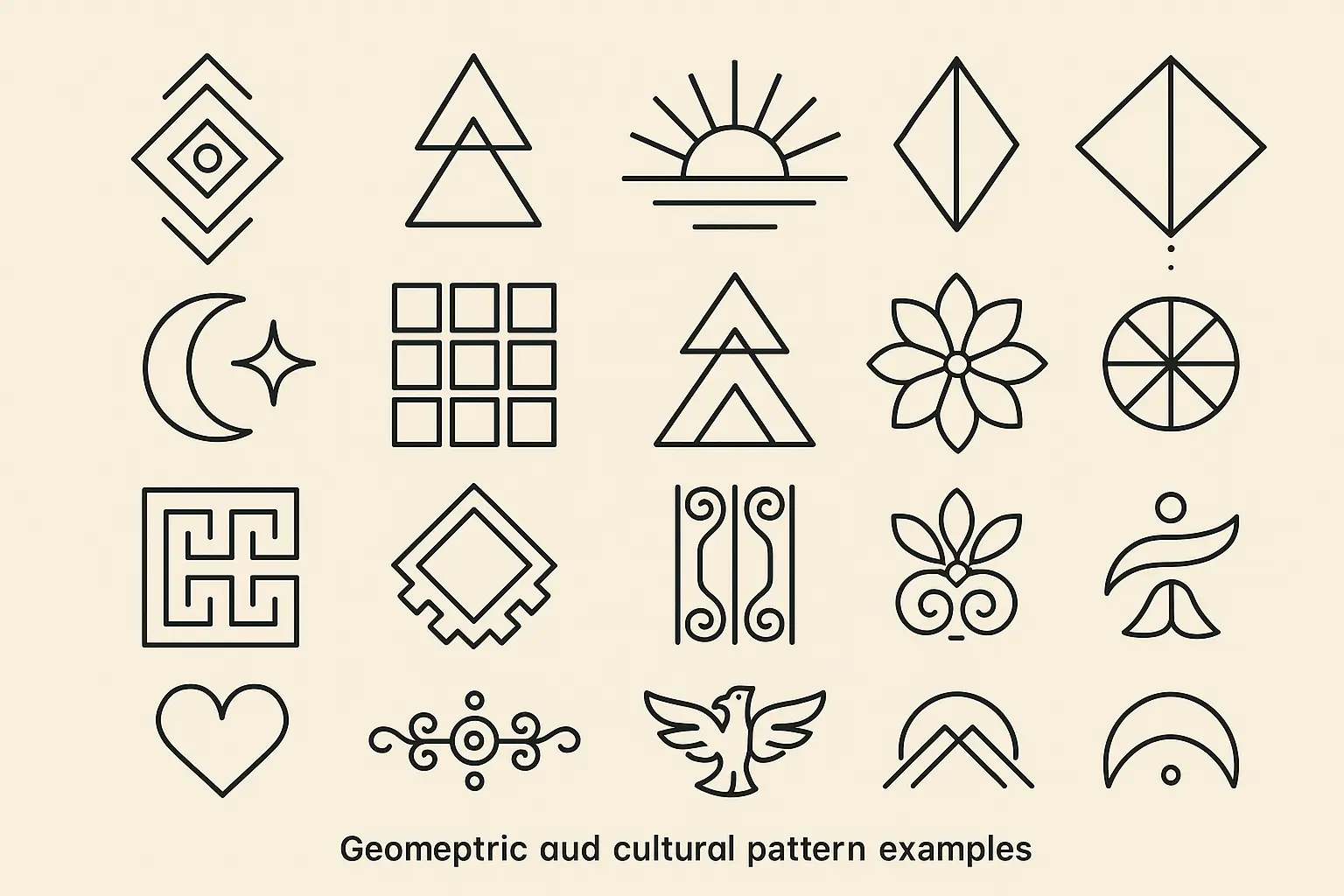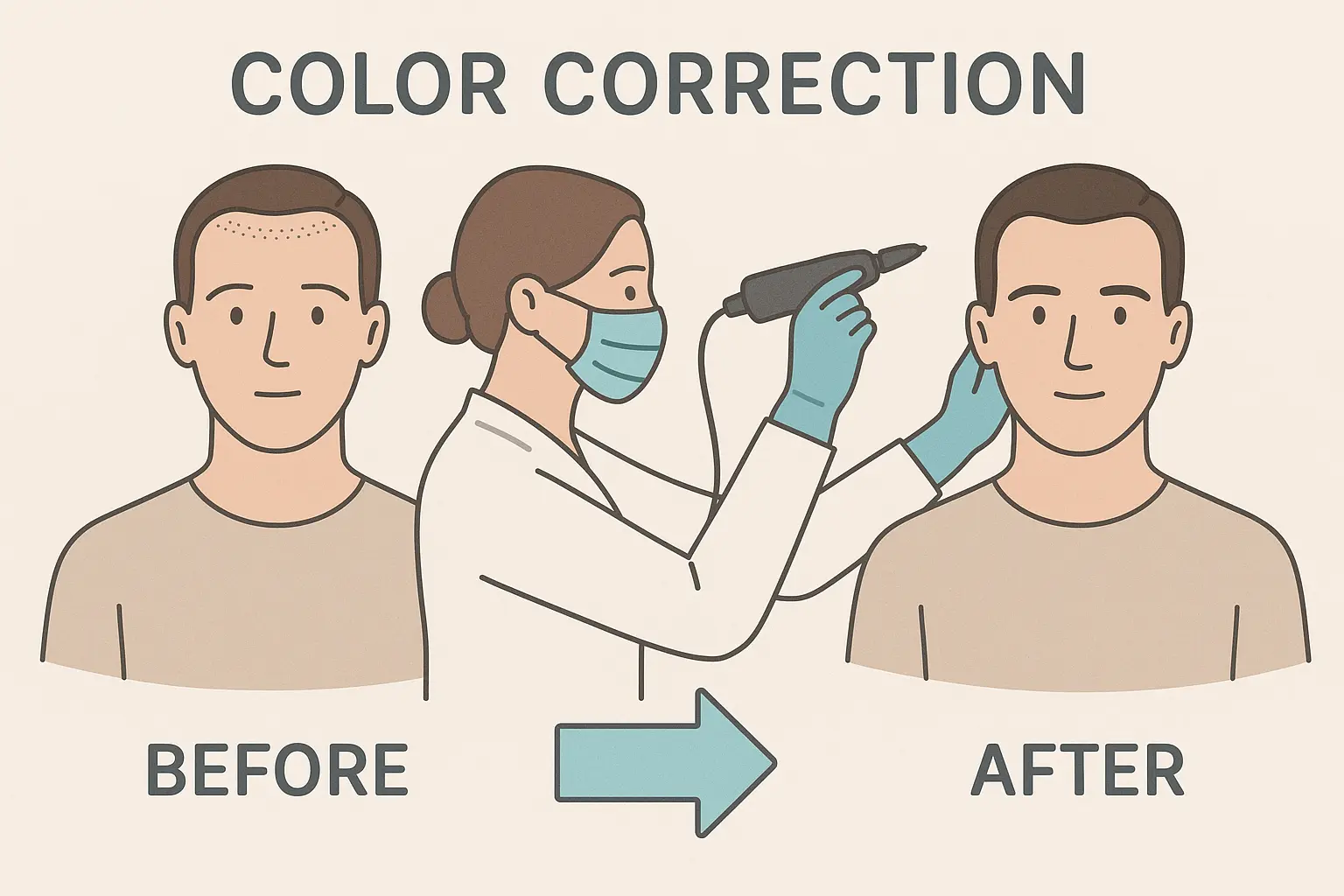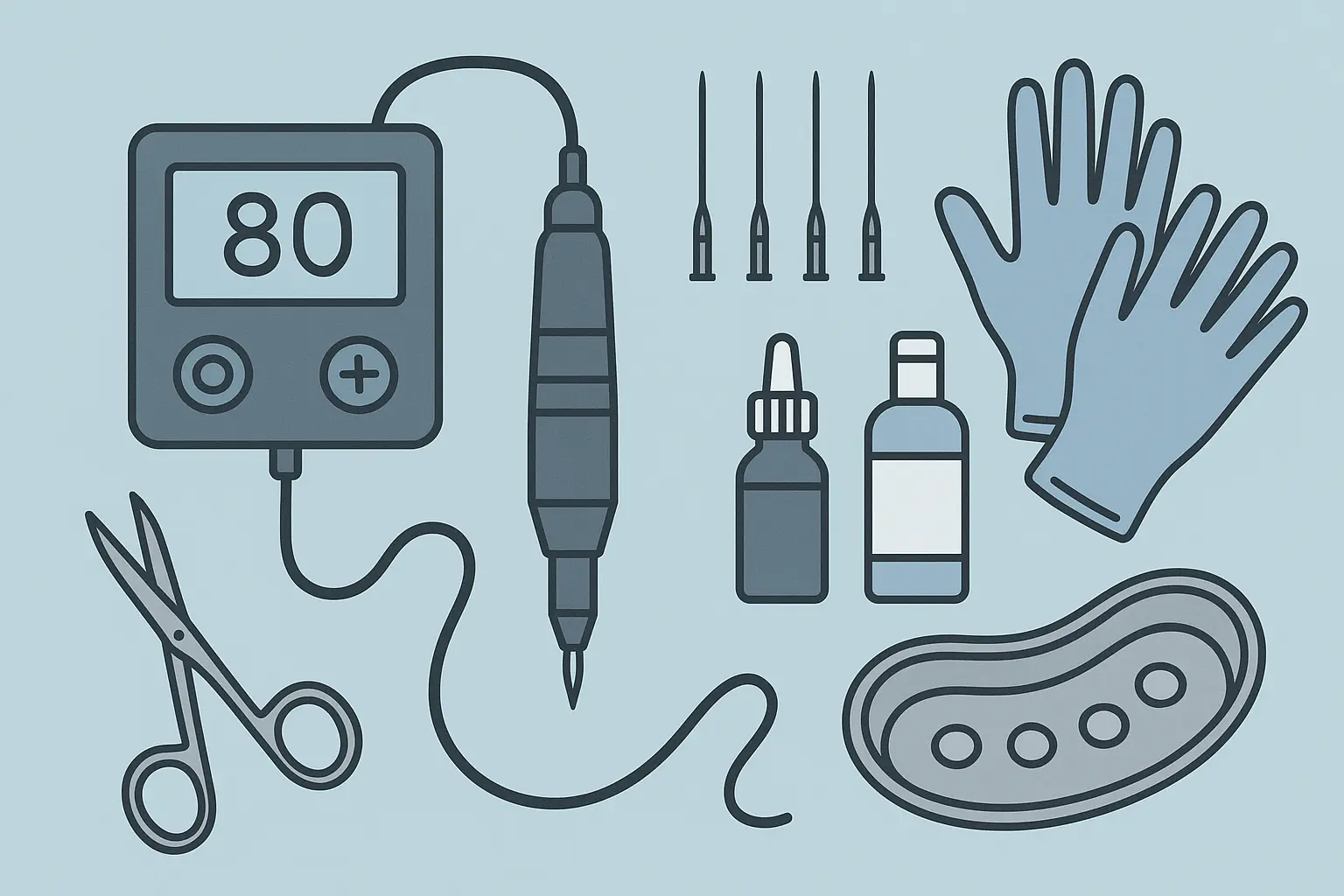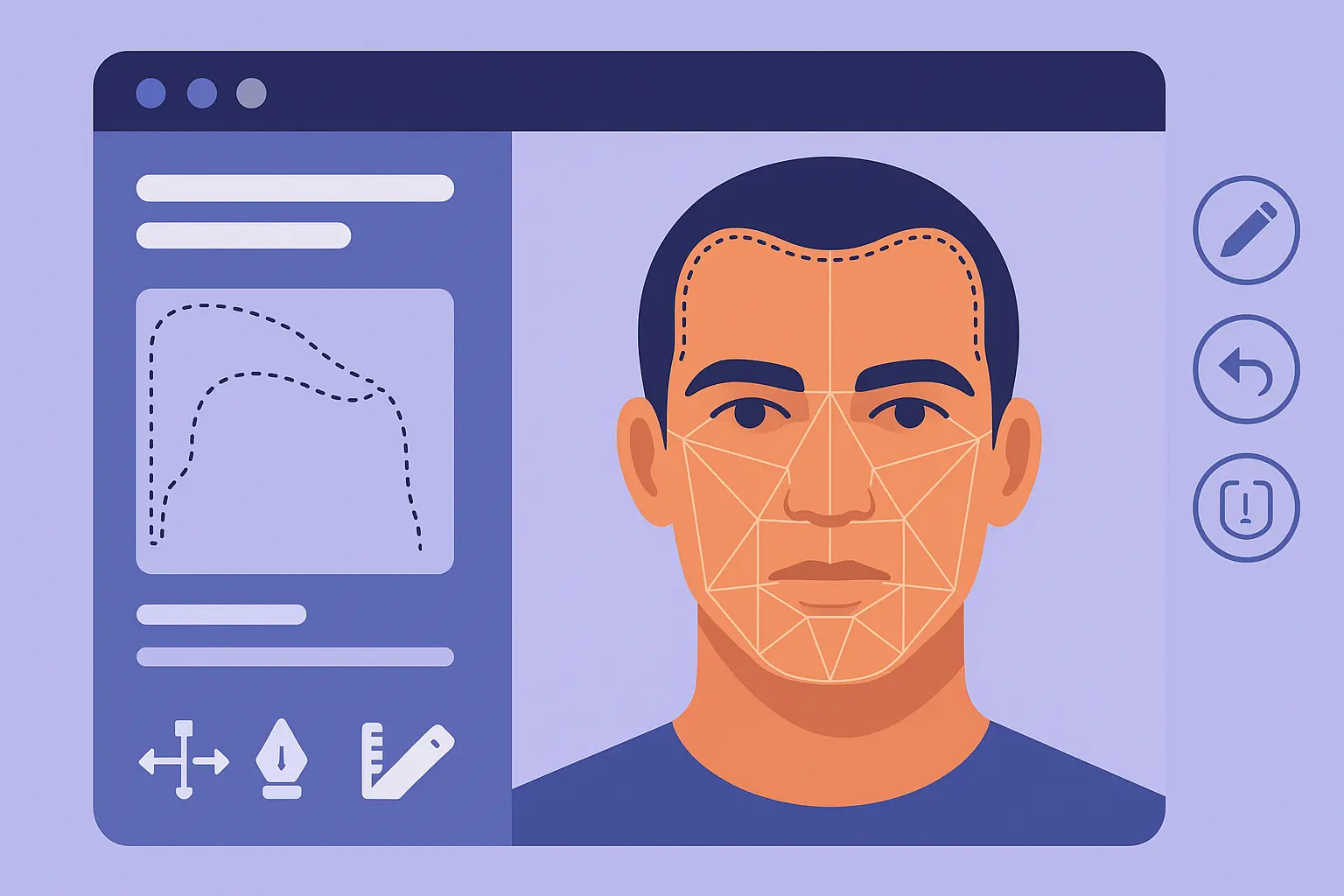25 Practical Hairline Tattoo Options Worth Considering
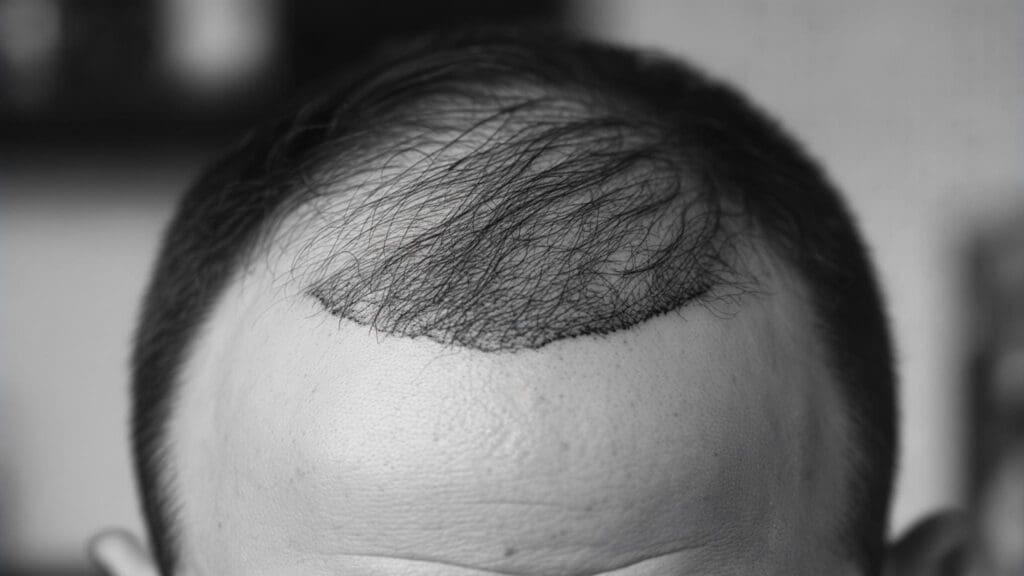
Most people I’ve talked to who got hairline tattoos are pretty happy with their results. I’ll be honest, when my friend Jake first told me he was getting his scalp tattooed, I thought he’d completely lost it. But seeing him six months later? The guy looked like he’d gotten his confidence back. That’s what got me curious about this whole thing.
That’s when I discovered this isn’t just about covering baldness – it’s about finding the right approach from 25 different options that actually fit your life, your style, and yeah, your budget too. Whether you’re dealing with male pattern baldness, thinning hair, or just want to try something completely different, there’s probably a hairline tattoo solution that makes sense for your situation.
The world of scalp micropigmentation has way more options than I ever imagined. We’re talking about everything from subtle touch-ups to bold artistic statements that definitely get people talking.
Source: Wimpole Clinic Hair Tattoo Study
Table of Contents
-
What You Need to Know Before Getting Started
-
Receding Hairline Fixes (5 Different Approaches)
-
Options for Women (4 Techniques)
-
Making Your Existing Hair Look Thicker (4 Methods)
-
Covering Up Scars (4 Solutions)
-
Creative and Artistic Styles (4 Options)
-
Keeping It Looking Good (4 Maintenance Strategies)
-
The Real Talk on Costs and Time
-
Will This Work in Your Life?
-
How Planning Tools Can Help
-
Final Thoughts
TL;DR
-
Hairline tattoos use tiny needles and special pigments – totally different from regular tattoos
-
25 options across six categories: fixing receding hairlines, enhancing women’s hairlines, adding density, covering scars, artistic designs, and maintenance
-
Costs $2,000-$5,000 upfront, then $300-$800 for touch-ups every year or two
-
Lasts 3-5 years before needing major refresh work
-
Success depends on finding a skilled artist, having realistic expectations, and keeping up with maintenance
-
Conservative jobs favor natural looks, creative fields embrace artistic styles
-
Touch-ups are part of the deal – this isn’t one-and-done
-
Scar work is trickier and takes longer to heal
-
Women’s techniques focus on softer, more natural-looking patterns
Here’s the thing about scalp micropigmentation – it’s completely different from getting a regular tattoo, and understanding this will save you from making expensive mistakes.
What You Need to Know Before Getting Started
Look, your scalp isn’t just another spot to get inked. Getting a hairline tattoo is totally different from getting that dragon on your arm. They use way smaller needles, don’t go as deep, and the “ink” they use is specially made to look like actual hair follicles coming out of your head – not just solid color blocks.
Here’s the thing about what is scalp micropigmentation – it’s basically creating thousands of tiny dots that trick your eye into thinking you’re seeing hair stubble. Pretty clever, right? The whole micropigmentation process is about precision dot placement that mimics how real hair looks when it’s just emerging from your scalp.
Just like understanding tattoo cost considerations, hairline procedures need careful planning and realistic expectations about what you’re actually signing up for.
|
What’s Different |
Regular Tattoo |
Scalp Micropigmentation |
|---|---|---|
|
Needle Size |
1-14 needles grouped together |
1-3 single tiny needles |
|
How Deep |
1.5-2mm into skin |
0.5-1mm (much shallower) |
|
Type of Ink |
Permanent ink |
Semi-permanent, designed to fade naturally |
|
Session Time |
2-8 hours |
1.5-4 hours |
|
Healing Time |
2-4 weeks |
5-14 days |
|
Touch-ups |
Rarely needed |
Every 1-3 years |
Your skin type matters way more than you’d think. If you’ve got oily skin like my buddy Marcus, you’re gonna need touch-ups sooner. His practitioner was smart about it though – used special pigments that work better with oily skin and told him upfront he’d need to come back in 10 months instead of waiting a year. This proactive approach kept his look natural and prevented that slight color shift that can happen with oily scalps.
Here’s what nobody tells you: this stuff fades gradually over 3-5 years. It doesn’t turn green like old tattoos – it just gets lighter. The pigments are designed to fade rather than change colors, but things like sun exposure, your skincare routine, and how fast your skin cells turn over all affect how long it lasts.
And can we talk about work for a second? If you’re in a super conservative job, people are gonna notice and ask questions. I’m not saying don’t do it, but be ready to explain why you suddenly have a perfect hairline. Some folks love talking about it, others find it awkward. Hairline tattoos definitely generate curiosity.
Money-wise, you’re looking at $2,000-$5,000 upfront, then $300-$800 every year or two for touch-ups. It adds up, so budget for the long haul. And if you ever change your mind? Removal costs are something to think about too. The micropigmentation process is a commitment that goes way beyond just the initial appointment.
Receding Hairline Fixes
1. The Classic Fix
This is your bread-and-butter hairline restoration. They basically recreate what you used to have, making it look like you’ve got a buzz cut all the time. The technique uses densely packed dots that gradually get less dense toward your temples – just like how hair naturally recedes. We’re talking about 300-500 individual tiny dots per square inch, with each dot being 0.1-0.3mm.
The tricky part is making sure it follows your natural facial structure. Takes about 2-3 hours, and you’ll be back to normal in about a week. You’ll need 2-3 different shades to match your natural hair color, and it typically lasts 3-4 years before needing touch-ups every 12-18 months.
Most guys go this route because it looks the most natural. The hairline tattoo blends seamlessly with whatever hair you still have. The micropigmentation technique is all about making it look like you never lost hair in the first place.
2. Go Big or Go Home
If subtle isn’t your thing, this is the full treatment. We’re talking about 3 separate appointments over a few months to build up maximum coverage while still looking natural. They pack in 500-700 dots per square inch with really sharp edge definition.
First session (3-4 hours) sets up the outline and gets you to about 40% density. Second session (2-3 hours, 6-8 weeks later) builds you up to 70% with color tweaks. Third session (1-2 hours, another 6-8 weeks later) finishes everything off with final details. Yeah, it’s more expensive ($3,500-$5,500), but the results are pretty dramatic.
This hairline tattoo is for guys who’ve lost a lot of hair and want to look like they never did. The scalp micropigmentation process creates major transformation but still looks natural.
3. The Subtle Approach
Perfect if you’re just starting to thin out and don’t want people to notice you “did something.” They just add some visual thickness to what you’ve already got without changing your actual hairline shape. Uses different sized dots (0.1-0.4mm) to create natural-looking irregularity.
They’ll put in 200-400 dots per square inch depending on how much hair you still have. The conservative approach lets your hair keep doing its thing naturally while giving you immediate visual improvement. Results blend perfectly with your existing hair patterns.
This hair tattoo is super natural-looking for professionals who need subtle enhancement. The micropigmentation technique gives you density without anyone knowing you had work done.
4. Temple Points Only
Sometimes you just need to sharpen up those temple areas without treating your whole forehead. This focused approach concentrates 400-600 dots in triangular temple areas, using gradient techniques so it blends naturally.
The geometric precision required makes this particularly challenging – you need perfect symmetry and temple points that actually complement your face shape while following natural hair growth patterns. But the visual impact is significant for a relatively small treatment area.
These hairline tattoo ideas work great for guys who’ve lost temple definition but still have decent coverage up front. The scalp tattoo approach creates sharp, masculine temple points.
5. The Widow’s Peak
Want that distinctive V-shaped hairline? This one’s tricky because it has to be perfectly symmetrical or it looks weird. The technique uses concentrated pigment in a V-shaped pattern, with 500-800 dots creating the peak structure and gradual density reduction toward the temples.
This distinctive feature can really change your whole face, so careful planning is essential. The concentrated work requires multiple sessions to build density gradually while maintaining those sharp geometric lines that make an authentic widow’s peak.
My friend James, a graphic designer, chose this to complement his angular face. His practitioner used digital mapping to ensure perfect symmetry, creating a 15mm peak depth that enhanced his natural bone structure. Three sessions over 4 months, but the improvement in his facial proportions made him look more mature and distinguished.
This hairline tattoo creates a distinctive look that suits angular faces. The micropigmentation process requires exceptional precision and expertise.
Options for Women
6. Soft and Natural
Women’s hairlines are totally different from men’s – they need to be softer and more curved. This technique creates gentle, rounded hairline shapes that complement feminine facial features while avoiding the angular patterns typical of men’s hairlines. Uses curved design patterns with 300-500 dots per square inch.
The dots are smaller (0.1-0.2mm) to create a more delicate appearance that suits women’s typically finer hair. The curved design philosophy ensures results enhance rather than masculinize your features. Color matching considers women’s often more varied natural hair tones.
This hairline tattoo addresses female pattern hair loss with appropriate feminine aesthetics. The micropigmentation technique creates soft, natural-looking results.
7. Baby Hair Magic
You know those little wispy hairs that frame your face? They can recreate those with tiny, tiny dots placed randomly. This advanced technique requires exceptional skill to achieve that irregular, organic appearance of natural baby hairs. Ultra-fine needles create 0.05-0.1mm deposits in random, organic patterns.
Lower density (200-400 dots per square inch) but placement demands significant variation in density and direction. The irregular, organic patterns can’t be systematically planned – they require artistic intuition and deep understanding of how natural baby hairs actually grow and move.
Just like fine line tattoo techniques require exceptional precision and artistic skill, baby hair recreation demands mastery of ultra-delicate pigment application.
This hair tattoo creates the most natural feminine hairline appearance. The scalp tattoo technique requires exceptional artistic skill.
8. Post-Baby Hair Loss
Pregnancy can really mess with your hairline, and this addresses that unique challenge. The tricky thing here is that your hair might grow back naturally, so they have to be conservative about how much they do. Conservative pigment placement uses 250-400 dots per square inch.
The design allows space for potential natural hair recovery while giving you immediate visual improvement. Color matching considers how hormonal changes may affect your natural hair color over time. The conservative approach prevents over-treatment if your natural hair returns.
This hairline tattoo addresses pregnancy-related hair loss with realistic expectations. The micropigmentation approach accommodates potential natural recovery.
9. Filling the Gap
That area between your eyebrows and hairline can get thin and make your forehead look huge. This specialized technique creates smooth visual flow from brow to hair, requiring deep understanding of facial proportions and aesthetic balance. Gradient density techniques use 150-300 dots per square inch.
Different pigment shades create natural color transitions that complement both your eyebrow and hair colors. The technique demands artistic skill in creating smooth transitions that enhance rather than disrupt natural facial proportions. Success depends on understanding how different facial features work together visually.
This cosmetic tattoo hairline approach creates seamless facial harmony. The micropigmentation technique requires understanding of facial aesthetics.
Making Your Existing Hair Look Thicker
10. Crown Coverage
Thinning on top is super common, and this helps make what you have look thicker. They’re not creating a new hairline – just making your existing hair look fuller by adding visual thickness through strategic pigment placement between existing hairs. Scattered pigment placement uses 200-350 dots per square inch.
Color matching focuses on your existing hair rather than scalp tone, ensuring seamless integration. Direction patterns must match natural hair growth to avoid detection. Works particularly well for guys with sufficient existing coverage who want enhanced visual density.
This scalp tattoo approach enhances existing hair coverage. The micropigmentation technique creates natural density enhancement.
11. See-Through Hair Fix
If your hair is fine and you can see your scalp through it, this helps by making your scalp less visible. This approach addresses overall scalp visibility through pigment application to the scalp surface rather than hair simulation. Low-density pigment application (100-250 dots per square inch) uses color matching to your scalp’s natural tone.
The technique reduces contrast between hair and scalp rather than simulating individual hairs. Success depends on understanding how light interacts with fine hair and scalp visibility. Color selection requires expertise in scalp tone matching rather than hair color replication.
This scalp micropigmentation reduces scalp visibility effectively. The tattoo hair approach creates natural-looking density.
12. Part Line Help
When you part your hair and see a stark white line of scalp, it’s not a good look. This technique reduces scalp visibility along parting lines while maintaining natural part appearance. Linear pigment placement along the part line uses 300-500 dots per inch.
Gradual density fading away from the central part creates natural appearance. Works particularly well for women who want to maintain their natural part while reducing scalp contrast. Color matching requires understanding how scalp appears through parted hair.
This hairline tattoo enhances natural part lines. The micropigmentation technique creates seamless part definition.
13. Temple Boost
Your temples naturally thin as you age, creating visual imbalance that this addresses. This technique adds pigment to create fuller temporal hair coverage appearance, working well with hairline restoration procedures. Curved pigment patterns follow natural hair growth direction.
Gradient density techniques use 250-400 dots per square inch, creating natural appearance that complements overall hairline work. Requires understanding how temporal hair naturally grows and thins over time. Success depends on creating seamless integration with existing hair patterns.
This scalp tattoo hairline approach enhances temple coverage. The micropigmentation technique creates natural temporal density.
Covering Up Scars
14. Hair Transplant Scar Cover-Up
Got a scar from an old hair transplant? This can help camouflage it by making it look like there are hair follicles in the scar tissue. Fair warning – scar tissue is tricky to work with, so results vary. This technique adds pigment that mimics hair follicles within scar tissue, requiring specialized knowledge of scar tissue characteristics and pigment retention properties.
Scar tissue requires 400-600 dots per linear inch, often needing multiple sessions due to different healing characteristics. Success depends on scar age (minimum 12 months), texture, and previous treatments. Realistic expectations include 70-85% visual improvement rather than complete concealment.
|
Scar Type |
Healing Time Required |
Sessions Needed |
Success Rate |
Cost Range |
|---|---|---|---|---|
|
Hair Transplant Strip |
12+ months |
2-3 sessions |
70-85% |
$1,500-$3,000 |
|
Accident/Trauma |
18+ months |
2-4 sessions |
60-80% |
$1,800-$3,500 |
|
Surgical Scars |
12+ months |
2-3 sessions |
65-80% |
$1,600-$3,200 |
|
Burn Scars |
24+ months |
3-5 sessions |
50-70% |
$2,000-$4,000 |
This hairline tattoo conceals transplant scars effectively. The scalp micropigmentation tattoo process requires scar-specific techniques.
15. Accident Scars
Every scar is different, so there’s no one-size-fits-all approach here. They have to customize everything based on your specific scar. The technique varies significantly based on scar size, texture, and location. Customized methods accommodate individual scar characteristics, typically using 300-500 dots per square inch.
Color adjustments may be necessary for scar tissue discoloration. Extended healing time (14-21 days) accommodates scar tissue characteristics. Success factors include scar maturity, texture quality, and realistic expectations about achievable improvement levels.
This scalp tattoo addresses trauma scars with specialized techniques. The micropigmentation approach requires customized treatment protocols.
16. Birthmark Blending
If you have a birthmark on your scalp, they can work around it to make it less noticeable by creating the illusion of hair growing around it. This technique requires careful color matching and artistic skill using color theory principles to neutralize birthmark appearance.
Simulated hair follicle patterns typically require 200-400 dots per square inch around birthmark areas. Success depends on birthmark size, color intensity, and skin texture variations. The artistic approach requires understanding how different colors interact visually.
This hair tattoo integrates birthmarks naturally. The micropigmentation technique uses color theory principles.
17. Alopecia Patches
Those circular bald spots from alopecia can be filled in, but here’s the thing – your hair might grow back naturally. So they have to be careful not to overdo it in case your real hair returns. This technique provides temporary visual improvement while understanding that underlying conditions may change. Conservative pigment placement uses 300-500 dots per square inch, designed to fade gracefully if natural hair regrowth occurs.
The approach must accommodate potential changes in the underlying condition. Color matching considers both current appearance and potential future hair regrowth. Success depends on realistic expectations about temporary nature and potential for natural recovery.
This what is a hairline tattoo solution addresses alopecia patches. The micropigmentation technique accommodates potential regrowth.
Creative and Artistic Styles
18. Geometric Patterns
Some people want everyone to know their hairline is tattooed – it’s a style choice. Think sharp lines, geometric shapes. Definitely not for everyone, but if you’re in a creative field, it can be pretty cool. This approach creates intentionally artificial geometric patterns appealing to creative industries or artistic statement-makers. Precise geometric measurements use 400-800 dots per square inch in defined patterns.
Multiple pigment shades often create visual interest beyond traditional black tones. The technique requires mathematical precision and artistic vision. Success depends on understanding how geometric patterns interact with facial features and personal style preferences.
Similar to geometric tattoo designs for body art, scalp geometric patterns require precise mathematical planning and artistic vision to achieve striking visual impact.
These hairline tattoo ideas create intentional artistic statements. The scalp tattoo approach embraces obvious artificial appearance.
19. Cultural Designs
This is about incorporating traditional patterns from your culture. Requires finding an artist who really understands and respects the cultural significance. This approach combines traditional tattooing techniques with micropigmentation, using 300-600 dots per square inch in culturally appropriate patterns and colors.
Cultural significance must be respected throughout the design process. Success requires understanding both traditional design principles and modern micropigmentation techniques. The approach appeals to individuals wanting to honor cultural heritage through personal expression.
This hairline tattooing incorporates cultural elements respectfully. The micropigmentation technique honors traditional designs.
20. Fade Effects
Modern, stylized looks that fade from dense to light. Very contemporary, very obvious it’s not natural hair – but that’s the point. This technique creates artistic gradient effects transitioning from dense pigmentation to natural skin tone. Variable density techniques range from 600 dots per square inch at the densest point to 50 dots at fade edges.
Smooth transitions require exceptional artistic skill and understanding of how pigment density affects visual appearance. The contemporary aesthetic appeals to fashion-forward individuals comfortable with obviously artificial appearance.
This hair tattoo creates modern gradient effects. The micropigmentation technique produces contemporary aesthetics.
21. Texture Matching
If you have curly or wavy hair, they need to adjust their technique to match how your hair naturally grows. Straight hair patterns look weird on someone with naturally curly hair. This approach requires understanding how different hair types appear at scalp level. Texture-specific pigment patterns use 250-500 dots per square inch.
Direction and size variations simulate natural hair emergence patterns. Success depends on matching pigment patterns to individual hair texture characteristics. The technique ensures results complement rather than conflict with existing hair texture.
David, a 42-year-old music producer, opted for geometric hairline patterns that incorporated subtle tribal elements honoring his Polynesian heritage. The design featured three parallel lines transitioning into traditional wave patterns, using both black and dark brown pigments. The artistic approach perfectly matched his creative industry environment and became a conversation starter that enhanced his professional networking.
These hairline tattoo ideas accommodate different hair textures. The micropigmentation technique matches natural hair patterns.
Keeping It Looking Good
22. Annual Tune-Ups
Like getting your car serviced – regular maintenance keeps everything looking fresh. Way cheaper than letting it fade completely and starting over. This systematic approach focuses on color refreshment and density maintenance rather than design changes. Annual refresh involves 25-50% pigment density refresh, with 100-200 new dots per square inch maintaining original appearance standards.
The protocol prevents dramatic fading that requires extensive restoration work. Consistent maintenance costs less than major restoration procedures. Success depends on establishing regular maintenance schedules and realistic expectations about ongoing requirements.
This hairline tattoo maintenance prevents major fading. The micropigmentation approach requires systematic upkeep.
23. Color Fixes
Sometimes the color shifts or fades unevenly. They can adjust it to get you back to looking natural. This technique adjusts pigment shades using advanced color theory knowledge. Color wheel principles neutralize unwanted tones while adding complementary pigments.
Corrective work typically involves 150-300 dots per square inch. Success requires understanding how different pigments age and interact over time. The approach prevents color shifts that create unnatural appearance.
Understanding tattoo aftercare principles becomes crucial for maintaining optimal color retention and preventing premature fading in scalp micropigmentation procedures.
This hair tattoo correction maintains natural colors. The micropigmentation technique prevents unwanted color shifts.
24. Density Changes
Maybe you want it thicker, maybe you want it lighter. Life changes, preferences change. Good news is they can adjust things as you go. This approach provides flexibility as circumstances change. Density can increase 25-75% through additional pigment placement.
Density reduction requires laser lightening followed by selective re-pigmentation. The flexibility accommodates changing lifestyle requirements and aesthetic preferences. Success depends on understanding how modifications affect overall appearance.
This scalp tattoo allows density modifications. The micropigmentation technique provides ongoing flexibility.
25. Seasonal Care
Sun, humidity, your skincare routine – all this stuff affects how your tattoo looks. Some people do quarterly check-ins to stay on top of it. This structured approach accounts for environmental variables through quarterly assessments with touch-up sessions as needed. Maintenance typically requires 50-150 additional dots per session.
The program ensures optimal appearance year-round despite environmental challenges. Proactive maintenance prevents major restoration requirements. Success depends on understanding how seasonal factors affect individual pigment retention.
These hairline tattoo ideas include seasonal considerations. The micropigmentation technique requires environmental awareness.
The Real Talk on Costs and Time
Look, this isn’t cheap. Session times vary big time based on what you’re getting done. Simple stuff takes 1.5-2 hours, while full restoration can take 3-4 hours for that first session. Recovery varies too – delicate work has you back to normal in 5-7 days, but scar work might take 2-3 weeks.
Just like tattoo pricing varies significantly based on complexity, scalp micropigmentation costs depend on how much work you’re getting done and how complex it is.
|
What You’re Getting |
Upfront Cost |
Yearly Touch-ups |
Session Time |
Recovery |
How Long It Lasts |
|---|---|---|---|---|---|
|
Basic Hairline Fix |
$2,000-$3,500 |
$300-$500 |
2-3 hours |
7-10 days |
3-4 years |
|
Women’s Enhancement |
$2,500-$4,000 |
$400-$600 |
1.5-2.5 hours |
5-8 days |
2-3 years |
|
Density Boost |
$1,800-$3,200 |
$300-$500 |
1.5-3 hours |
5-10 days |
2-4 years |
|
Scar Cover-up |
$1,500-$4,000 |
$400-$800 |
2-4 hours |
14-21 days |
2-3 years |
|
Artistic Designs |
$3,000-$5,500 |
$500-$800 |
3-5 hours |
10-14 days |
1-3 years |
|
Touch-up Work |
$300-$800 |
N/A |
1-2 hours |
3-7 days |
N/A |
Color-wise, they’ll use 1-4 custom-blended shades depending on what you’re doing. Simple work uses 1-2 colors, while full restoration might need 3-4 colors to match your natural hair undertones. Artistic stuff might use non-traditional colors for effect.
You’re looking at $2,000-$5,500 total for complete procedures. Simple density work starts around $2,000, while complex artistic designs or full restoration can hit $5,500. Then factor in $300-$800 annually for maintenance depending on how complex your work is and how well your skin holds the pigment.
Touch-up schedules vary from 8-12 months for delicate work to 18-24 months for dense restoration. High-maintenance artistic designs might need quarterly attention, while conservative approaches need annual refresh sessions.
This hairline tattoo investment requires long-term planning. Scalp micropigmentation costs include ongoing maintenance. The micropigmentation process demands financial commitment.
Will This Work in Your Life?
Conservative job? Stick with natural-looking options that appear as authentic hair rather than obvious cosmetic work. Classic receding hairline restoration, subtle density enhancement, and natural scar concealment work well in traditional corporate settings.
Creative field? Go wild if you want. These industries often celebrate personal expression through body art, making obvious cosmetic procedures socially acceptable or even advantageous. Artistic patterns, cultural integration work, and contemporary gradient effects fit right in.
The maintenance schedule matters too. If you travel constantly for work, quarterly touch-ups might not be realistic. High-maintenance options requiring frequent touch-ups may conflict with demanding work schedules. Think about your ability to accommodate recovery periods and touch-up appointments when picking your approach.
Social acceptance varies by where you live and your social circle. Urban areas typically show greater acceptance of cosmetic procedures, while conservative communities may require more subtle approaches. Your comfort level explaining the procedure affects technique selection – some people love talking about it, others find it awkward.
This hairline tattoo decision impacts your professional image. Scalp micropigmentation requires workplace consideration.
How Planning Tools Can Help
One of the biggest challenges with hairline tattoos is visualizing how different options will actually look on your specific face. Many people struggle imagining how different hairline shapes and densities will work with their facial structure. AI-powered design platforms help address these visualization challenges through educational resources and design principles crucial for successful outcomes.
Communication with practitioners becomes way easier when you understand proportion, placement, and aesthetic harmony principles. Platforms that emphasize creating detailed design specifications translate directly to micropigmentation consultations, helping bridge the gap between what you’re envisioning and what the artist can actually execute.
Similar to how AI tattoo generators revolutionize traditional body art planning, these tools provide valuable visualization capabilities for scalp micropigmentation design decisions.
Style exploration and customization mirror the decision-making process needed for hairline tattoos. Whether you’re exploring different hairline shapes, density patterns, or artistic approaches, systematic design thinking helps you make informed decisions about your scalp micropigmentation journey.
The comprehensive educational approach addresses knowledge gaps that exist in the hairline tattoo industry. Understanding technology, artistic principles, and long-term considerations helps you make better decisions whether you’re planning traditional body art or scalp micropigmentation procedures.
Ready to visualize your perfect hairline design? Explore design tools and educational resources to approach your hairline tattoo decision with confidence and professional-quality preparation.
This hairline tattoo planning benefits from visualization tools. Scalp micropigmentation decisions require careful design consideration. The micropigmentation process improves with proper planning.
Final Thoughts
Picking the right hairline tattoo approach comes down to balancing what you want it to look like, how it fits into your life, and what you can realistically keep up with maintenance-wise. The 25 options I’ve covered here span pretty much every need you could have, from subtle touch-ups that nobody will notice to bold artistic statements that definitely get conversations started. Success really depends on finding someone who knows what they’re doing, keeping your expectations realistic, and staying on top of those touch-up appointments.
Your investment goes way beyond that initial procedure cost – you’re signing up for years of touch-up sessions and some lifestyle adjustments. Conservative approaches tend to last longer and need less maintenance, while artistic designs give you unique personal expression but need more frequent attention. Think carefully about your work environment, how comfortable you are discussing it with people, and whether you can realistically handle the financial commitment before you take the plunge.
The scalp micropigmentation industry keeps getting better with improved techniques, better pigment formulations, and higher training standards. What seemed impossible just decades ago now offers realistic solutions for hair loss challenges affecting millions of people worldwide. Whether you’re dealing with male pattern baldness, female hairline recession, or need to cover up scars, modern micropigmentation techniques provide viable alternatives to traditional hair restoration methods.
Just like advances in tattoo removal technology provide better options for changing circumstances, improvements in scalp micropigmentation ensure better outcomes and more flexible solutions for future hair loss progression.
The tattooed hairline represents a permanent commitment that requires careful consideration of all the factors we’ve discussed throughout this guide.

